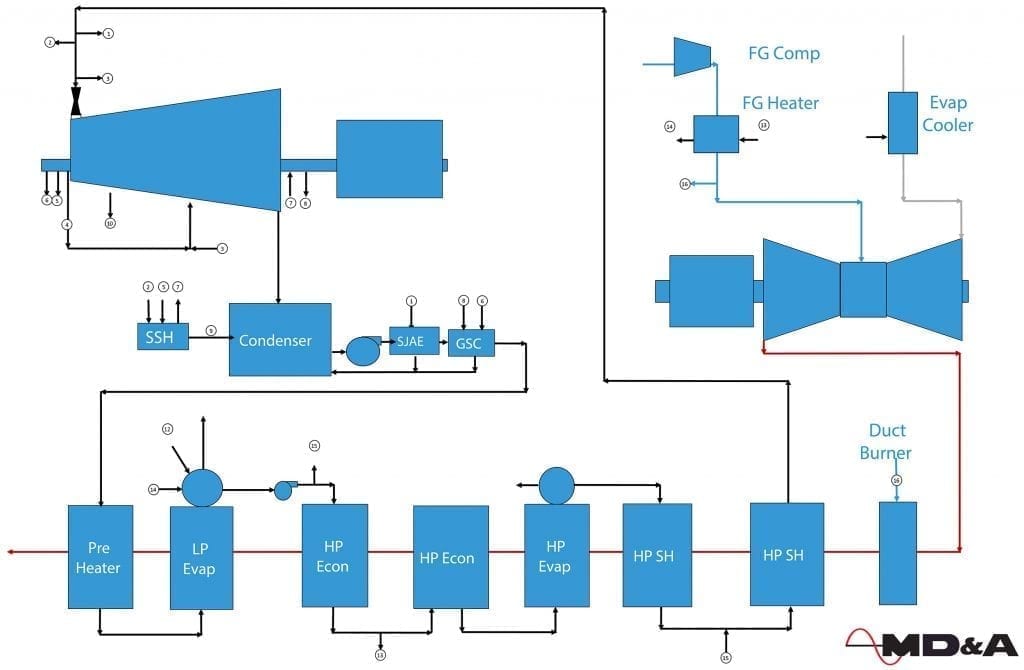Thermodynamic Analysis on a Steam to Combined Cycle Plant Conversion
Mechanical Dynamics & Analysis (MD&A) experts recently performed a thermodynamic analysis to assist our client in converting their coal and natural gas plant to combined cycle operation.
The customer was able to locate a gray market Gas turbine and Heat Recovery Steam Generator (HRSG). Our team modeled how each component would interact with one another, and were able to calculate output, heat rate, as well as determine if other existing equipment could be utilized in the conversion.
The existing steam turbine is a 150 MW non-reheat, condensing unit with 11 stages. The gas turbine is a GE® 7FA.05 with a simple cycle rating of 211 MW.
The client requested MD&A to perform an analysis and create heat balances for four operating points, as well as two additional cases to determine how the plant would operate at different ambient conditions.
The analysis process began with creating a model of the steam turbine using the computer software ThermoFlex®. No recent performance reports were available for the analysis, therefore, steam turbine efficiency degradation was estimated at slightly below the new and clean condition illustrated on the OEM’s heat balances.
A model of the gas turbine was developed in ThermoFlex®, independent of the steam turbine model. The performance of the compressor, turbine, turbine inlet temperature, and IGV controls were tuned to match performance correction curves provided by the OEM. The model was also adjusted to account for site specific conditions including elevation, ambient temperature, relative humidity, fuel composition, inlet and exhaust pressure drops.
A third independent ThermoFlex® model was created with just the Heat Recovery Steam Generator (HRSG). A hot gas source with the same constituents as the gas turbine exhaust and a steam sink with the same pressure as the main steam line in the provided combined cycle heat balance was used to control conditions at both ends of the HRSG. Steam drums, evaporators, superheaters, reheaters, etc. were built so that the steam and exhaust conditions between each component matched the conditions listed on the heat balance.
Lastly, all three models were combined into a single model to create the combined cycle. The extraction lines used for feed water heaters were eliminated with the exception of the auxiliary steam line used for station heating. At the customer’s request, the gas turbine was throttled back to a position where the sum of the gas turbine generator and steam turbine generator minus auxiliary loading equaled transmission constraints at the generating station.
With the gas turbine exhaust providing the thermal energy to the HRSG, which in turn provided steam to the steam turbine, all component interactions could then be evaluated. The results were validated to assure output and heat rate were appropriate for a combined cycle of this size and configuration, and that steam flow through the steam turbine was still within the range of the original OEM heat balances.
Components such as water pumps, a condenser, drains, and a steam seal regulating system were also added.
MD&A also provided recommendations on how to improve the overall performance of the cycle.
MD&A provides clients with the engineering and technical expertise to perform complex thermodynamic analysis including analyzing cycle efficiency and providing recommendations for correcting thermal problems. We offer pre and post-outage testing, uprate analysis and heat balance modeling.

Call MD&A today for performance services at +1 (518) 399-3616 or use our Contact form.